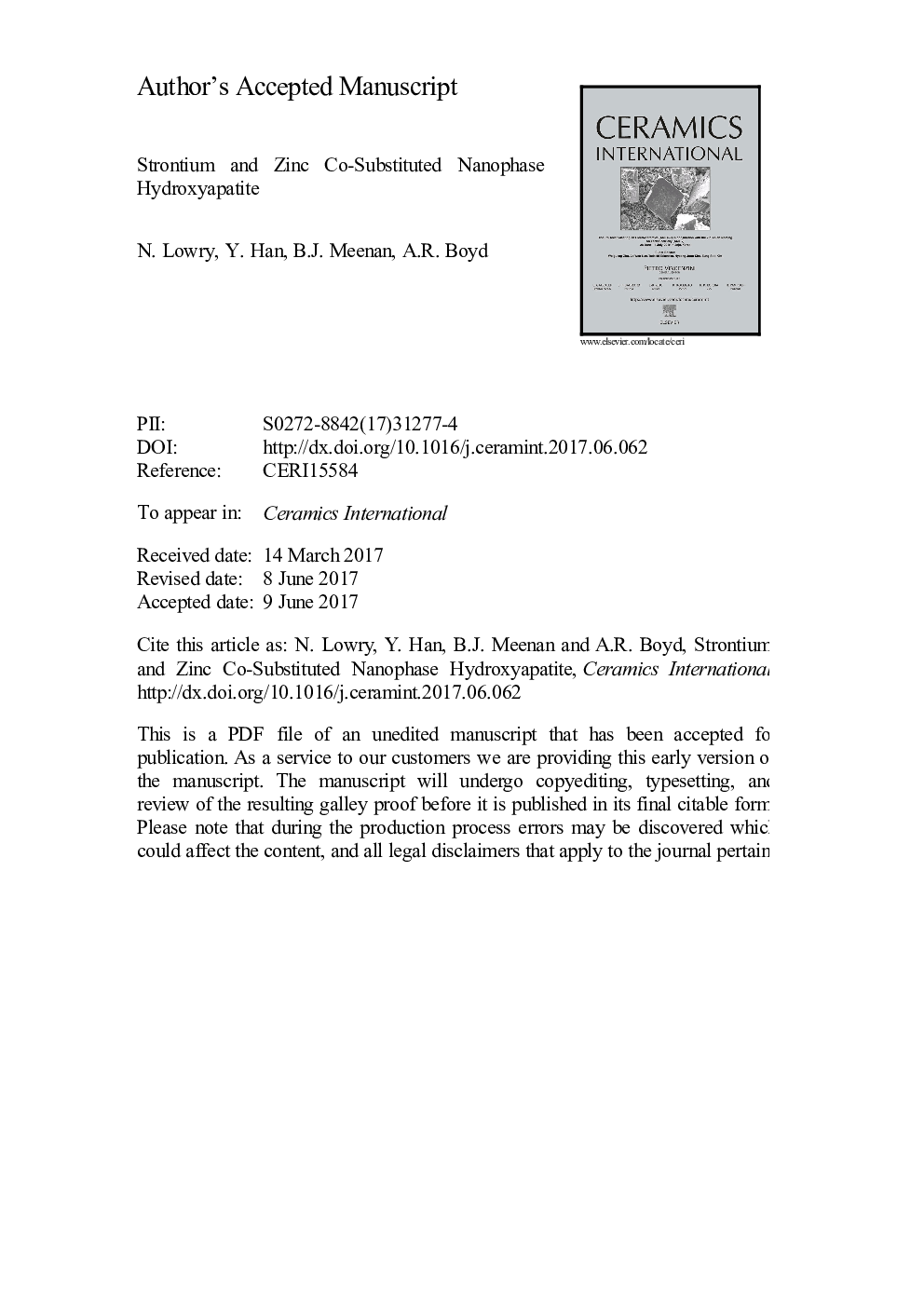| Article ID | Journal | Published Year | Pages | File Type |
|---|---|---|---|---|
| 5437500 | Ceramics International | 2017 | 35 Pages |
Abstract
It is well documented that biological hydroxyapatite (HA) differs from pure and synthetically produced HA, and contains of a mixture of calcium phosphate (CaP) phases in addition to a range of impurity ions, such as strontium (Sr2+), zinc (Zn2+), magnesium (Mg2+), fluoride (F-) and carbonate(CO32-), but to name a few. Further to this, biological apatite is generally in the form of rod (or needle-like) crystals in the nanometre (nm) size range, typically 60Â nm in length by 5-20Â nm wide. In this study, a range of nano-hydroxyapatite (nHA), substituted nHA materials and co-substituted nHA (based on Sr2+ and Zn2+) were manufactured using an aqueous precipitation method. Sr2+ and Zn2+ were chosen due to the significant performance enhancements that these substitutions can deliver. The materials were then characterised using Fourier Transform Infrared Spectroscopy (FTIR), X-Ray Diffraction (XRD), X-Ray Photoelectron Spectroscopy (XPS) and Transmission Electron Microscopy (TEM) techniques. The TEM results show that all of the samples produced were nano-sized, with Zn-substituted nHA being the smallest crystals around 27Â nm long and 8Â nm wide. The FTIR, XRD and XPS results all confirm that the materials had undergone substitution with either Sr2+ and Zn2+, for Ca2+ within the HA lattice (or both in the case of the co-substituted materials). The FTIR results confirmed that all of the samples were carbonated, with a significant loss of hydroxylation as a consequence of the incorporation of Sr2+ and Zn2+ into the HA lattice. None of the materials synthesised here in this study contained any other impurity CaP phases. Therefore this study has shown that substituted and co-substituted nanoscale apatites can be prepared, and that the degree of substitution (and the substituting ion) can have a profound effect of the attendant materials' properties.
Keywords
Related Topics
Physical Sciences and Engineering
Materials Science
Ceramics and Composites
Authors
N. Lowry, Y. Han, B.J. Meenan, A.R. Boyd,
